A 90-minute flight from Mumbai takes you to the pristine Tannirbhavi Beach near Mangalore, on India’s west coast. It's home to a surfing school that not only teaches you to master the waves, but also save lives
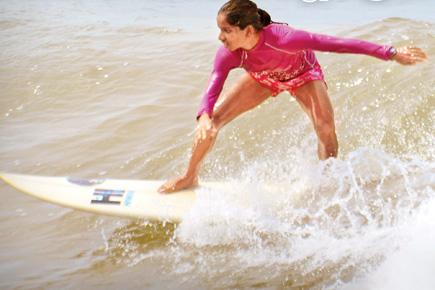
Sinchana D Gowda (14) won two national level championships in 2015 -- Surfing Federation of India (SFI) Covelong Point Classic and Mahabs Surf Classic. An ex-student of Stoked Surfers Club, she currently trains with the Surfing Federation Of India.
![]() While studying biotechnology in Australia, national-level swimmer, Partha Varanashi, tried surfing and he kept going back for more. On his return to India in 2012, he started a summer camp for surfing in his hometown, Mangalore, but it had very few takers. Not one to get disappointed, he started teaching swimming and competitive surfing by forming the Stoked Surfers Club, later that year, along with three friends, Dhruvin Jasani, Mithun Bhat and Abhinav Bansa.
While studying biotechnology in Australia, national-level swimmer, Partha Varanashi, tried surfing and he kept going back for more. On his return to India in 2012, he started a summer camp for surfing in his hometown, Mangalore, but it had very few takers. Not one to get disappointed, he started teaching swimming and competitive surfing by forming the Stoked Surfers Club, later that year, along with three friends, Dhruvin Jasani, Mithun Bhat and Abhinav Bansa.
ADVERTISEMENT
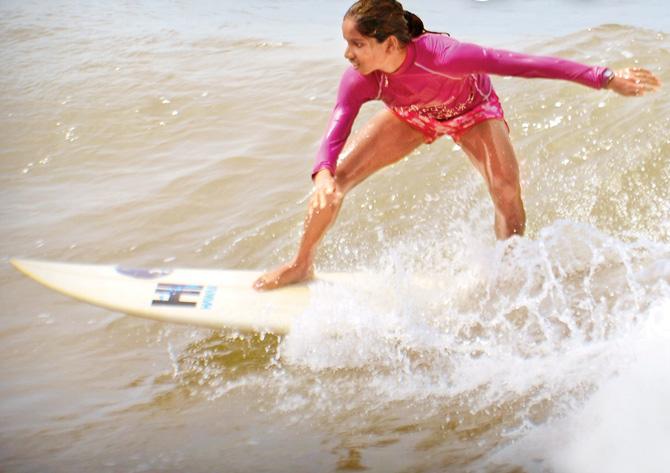
Sinchana D Gowda (14) won two national level championships in 2015 — Surfing Federation of India (SFI) Covelong Point Classic and Mahabs Surf Classic. An ex-student of Stoked Surfers Club, she currently trains with the Surfing Federation Of India. Pic courtesy/Stoked surfers club
“Initially, I started teaching friends. There were very few surf schools back then and no one was really teaching competitive surfing. We identified few of our best swimming students with a stronger core and broad shoulders, and trained them rigorously for six months,” he recalls. “Initially we put in some money, bought 15 surfboards and got a place on the beach. A large part of the training takes place at the beautiful Tannirbhavi beach in Mangalore,” he adds.
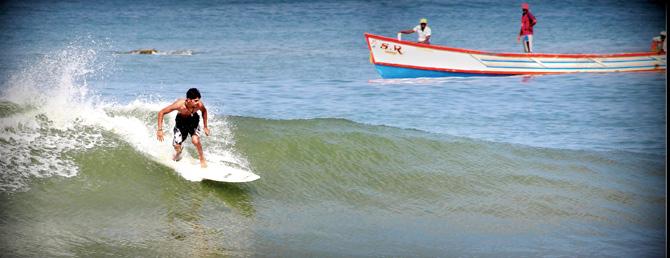
Srikrishna Vasanth is an ISA (Internation-al Surfing Association) certified instructor and trustee, Stoked Surfers Club. PICS courtesy/ Stoked Surfers Club
Stoked Surfers Club is the first Indian surf school with its own surf life-saving club. In 2014, as part of a cultural exchange between India and Australia, one of the collaborations that the Rashtriya Life Saving Society (India) undertook was to introduce surf life saving in India. “They approached us, asking if we could start a surf life-saving club in Mangalore. It is a popular concept in Australia and America, and is mandatory in most surf clubs,” explains Varanashi, who is now also director of Rashtriya Life Saving Society (India). “According to a recent survey, 23% of the world’s drowning cases occur in India, and 16,000 people drown in India, every year. As part of the surf lifesaving club, we have now trained 40 students who finished the first level of training (three levels are must to complete the course); one of them also saved a life on Tannirbhavi beach recently,” he adds, proudly.
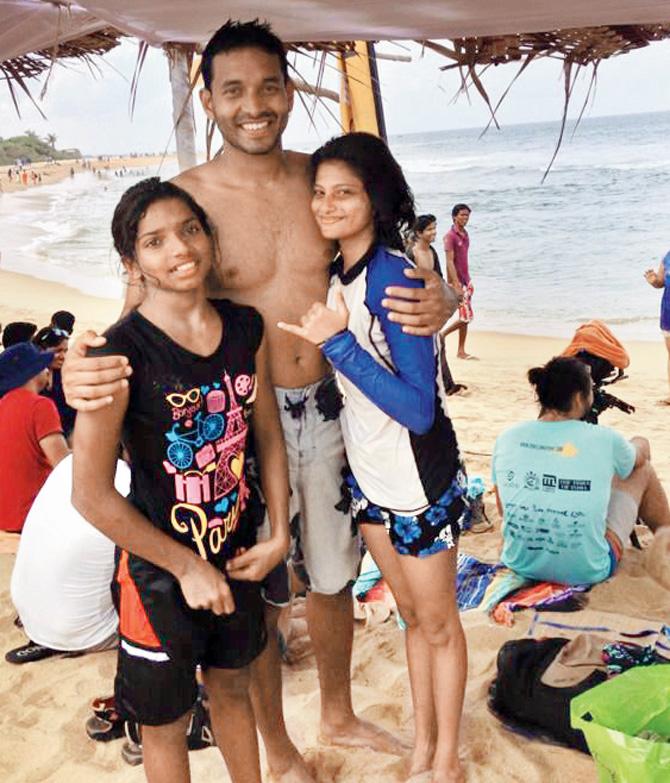
(From left) Sinchana D Gowda, Partha Varanashi and Anisha Nayak
Laurels for surfers
Students of the club have started winning laurels already. Sinchana D Gowda, 14, ex-student of Stoked Surfers Club, won two national level championships in 2015 —Surfing Federation of India (SFI) Covelong Point classic and Mahabs Surf Classic. She currently trains with the Surfing Federation of India and is ranked No. 1 in the women’s open surfing in India. Anisha Nayak, another ex-student of the club, stood third in the same contests, has a No. 3 ranking.
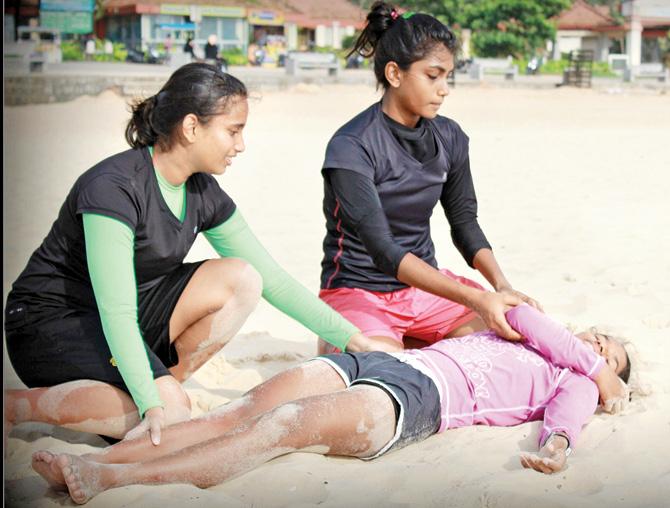
Students of the Surf Life Saving Club train to help swimmers
Who can surf?
Varanashi informs that enthusiasts must know swimming to enjoy surfing to the fullest. Non-swimmers are also taught with life jackets. A person who is able to jog for 1 km can qualify as a fit enough to surf.
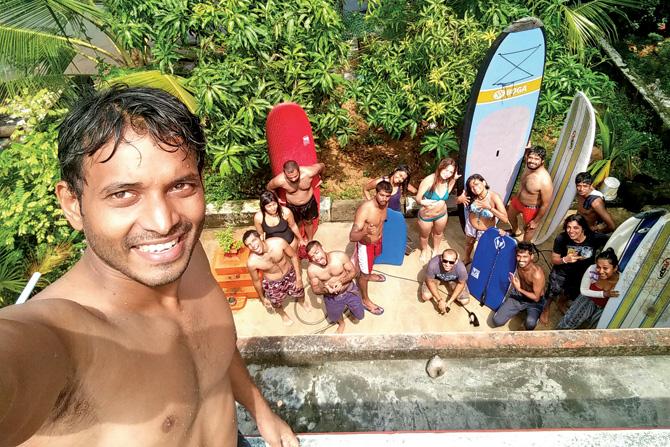
Partha Varanashi with fellow surfers
How to get started?
“Surf training starts on a soft surfboard. The student learns balancing, paddling and catching waves. After two to three days, the same process is repeated on a hard surfboard. Hard surfboards are not given to absolute beginners since they can get hurt,” he adds. These surfboards are about eight-and-a-half-feet long. As one gets better at it they graduate to smaller surfboards of six feet and then five feet. “If you inform trainers sufficiently in advance, they prescribe a few exercises, to help strengthen the arms and increase fitness,” says Varanashi. Training on a skateboard can also help learn balance. One can learn the basics in four to five sessions. Each session runs for two to three hours. Currently, a certificate is given on completion of the instructor’s course. An instructor can then take on three students at a time with lifeguards.

Why Mangalore?
The right direction of wind and no rain are essential for a good surfing experience. Low tide is usually preffered. “We don't teach during the monsoon. We use that time to train ourselves and upgrade the instructors,” says Varanashi. “Mangalore has clean beaches, good water, lesser crowds and long green patches, making it ideal for surfing. It is not touristy and commercial like the beaches of Goa,” he explains.
Cost matters
A beginner’s course costs Rs 1,300 for a single class, Rs 2,999 for three classes and Rs 3,999 for five classes. The three-class module, also known as weekend class, is the most popular. The school provides the surfboard for these sessions. You can rent a surfboard for R500 per hour only if you are trained and can handle hard surfboards. Soft surfboards are not given out on rent. Buying a board can be expensive — it costs about Rs 50,000.
Other surfing havens Andaman & Nicobar Islands, Pondicherry, Mahabalipuram, Kovalam, Covelong and Udipi make for great surfing destinations.
Email: surfmangalore@gmail.com
Call: 9482213019
 Subscribe today by clicking the link and stay updated with the latest news!" Click here!
Subscribe today by clicking the link and stay updated with the latest news!" Click here!






